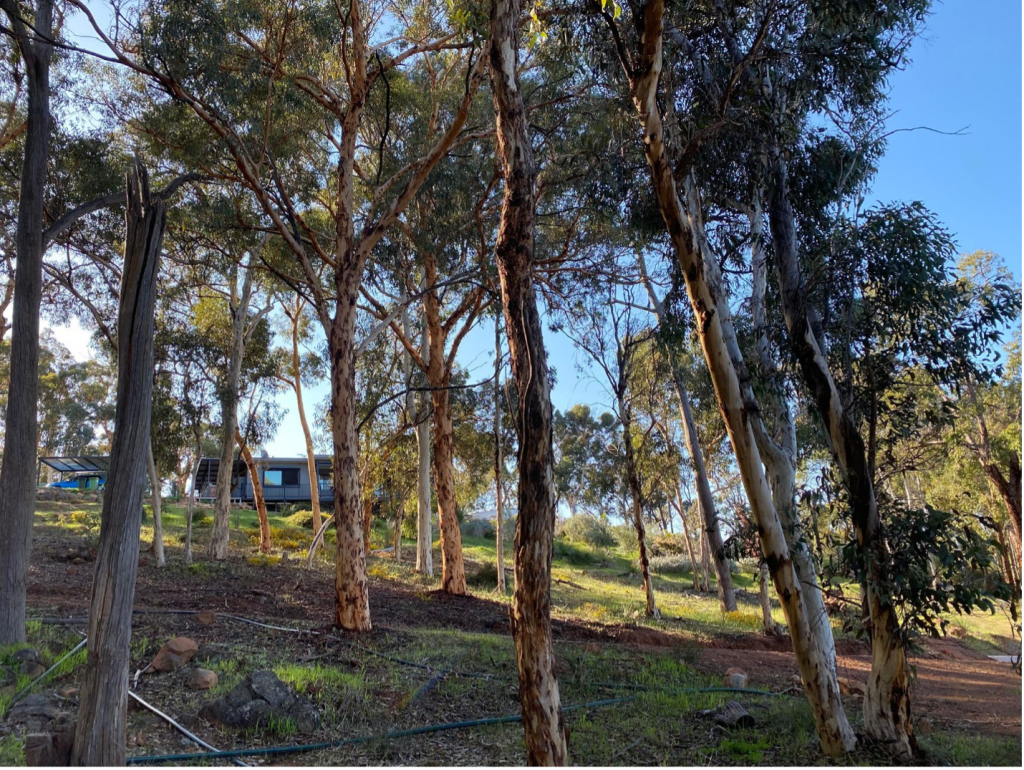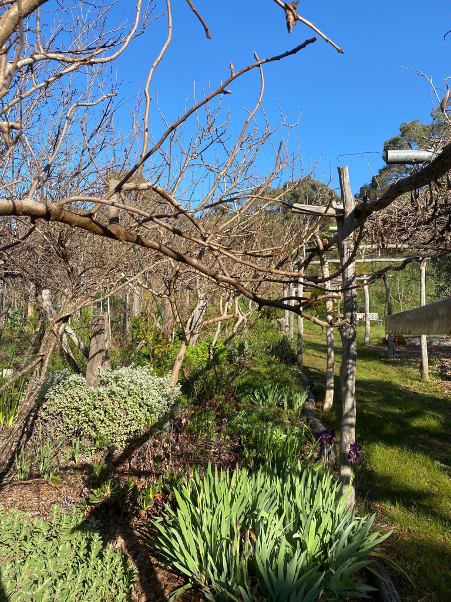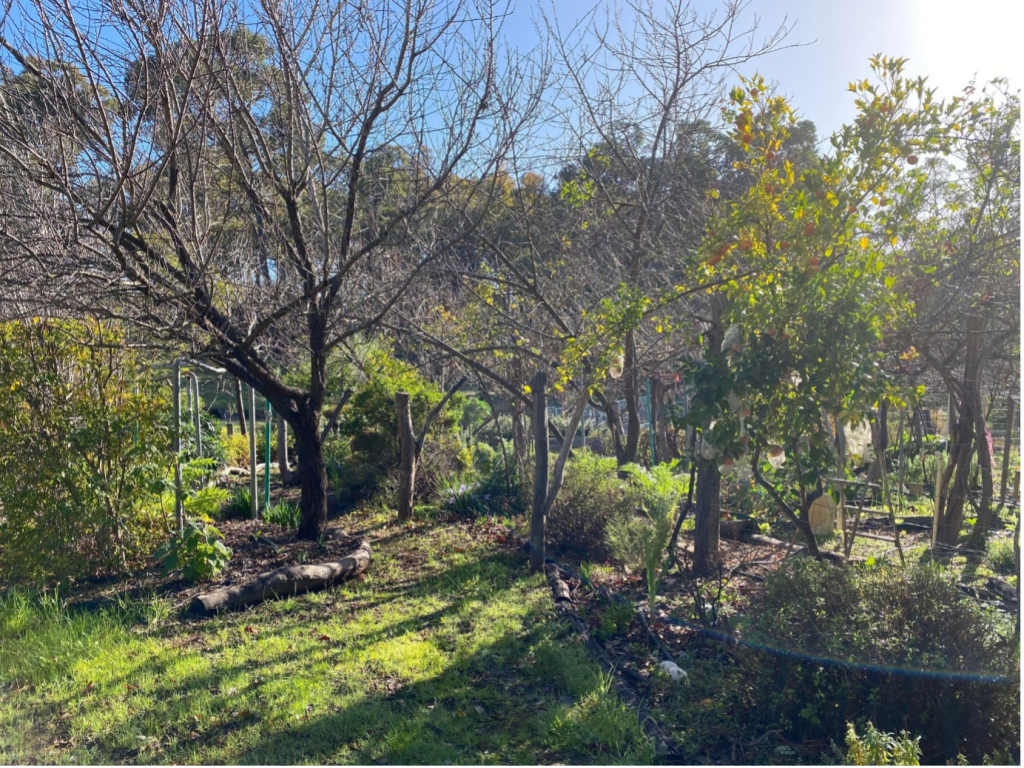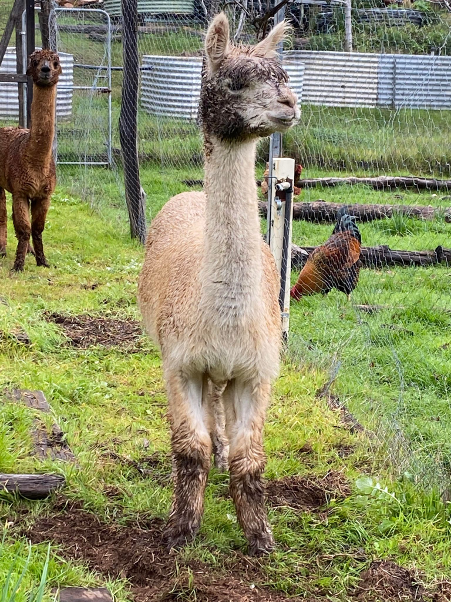Julimar Permies
by Helen Harvey
When we began our Julimar gardening journey in 2008, we had a bucket, a shovel and, very luckily, a dam full of water. That was July and by September we had upped our game as we realised this was crowbar country as the clay dried out and turned to something like concrete. The crowbar progressed to a hired powered auger as the concrete / clay won the battle.
The first tank was bought so we could pump water for storage as we realised the dam wasn’t going to hold water past December. The hand saw progressed to a chainsaw in order to be able to cut through fallen wandoo and jarrah to make posts for a chook shed, chook run and the vegie garden.
The howling, ferociously hot north easterlies led to windbreaks of olive, acacia and carob trees. Some of the fruit trees we planted that first spring and summer without enough compost, gypsum or water survived, amazingly, and by autumn we knew we had to change our methods. The last proper vegie garden and orchard we had created had been in Denmark in much kinder south coast weather and sandier soils.
We were camping every weekend on our ten-acre half bush, half pasture block, hidden away in a little valley, planting fruit trees in groves and creating a food forest / vegie garden. We were both still working full time so could only get there on the weekends to water. Lots of plants survived though and we realized that a tree that survived the first summer would probably make it. My husband became an expert on irrigation through trial and error, settling finally, after a few iterations, on a drip irrigation system with water that came from the now two tanks at the top of the hill.
Much reading, manure, compost, pea straw, gypsum and sweat later, we had made a good start. Plants that called themselves perennial still laughed at our efforts, the trees that only got watered once a week struggled, shade cloth had to go over the garden by October and we may as well have ripped up many $50 notes and let them fly away in those easterlies that dried out everything. But we were getting some produce, learning a lot and having loads of fun.
Bring out your rubbish finds were fantastic for making raised beds and sheds, particularly after The Great Perth Hail Storm of 2010 when there was so much Colourbond roofing put out for collection.
The next few years involved project after project, always planting and building more and more. Alpacas and an alpaca shed, more chooks, more fruit trees, an expansion to the vegie garden, storage sheds, a garden shed, a pond, raised asparagus beds and finally a house with its own tank. Then another tank. And another two. And a tank on every shed. Water has been the key to making this wonderful garden possible and we eventually put down a bore. The water is moderately salty so we researched, terraced hills and put in “salty” gardens. The pumping and the irrigation system got even more complicated. Some years we’ve had a whole 100,000l tank full of water left over at the start of winter. Some years the Keeper of the Water has been very stressed.
We retired and spent half the week in Julimar and half the week in Perth. COVID 19 hit and we got to spend five months in Julimar over the winter, which passed amazingly quickly. Then there were more projects – a potting shed, another pond, bees and more planting.
Fifteen years after we started, we have a fantastic food forest / vegie garden, fruit trees and vines that provide all year round and ornamental gardens and trees for the flowers, the bees and the pleasure. There are three ponds, a small white picket fenced cricket / footy ground with spectator seating (warning – the date palms spike and flatten balls), two olive groves, and the list goes on. We are selling so we can downsize so the next hundred projects will have to be for someone else. Aquaculture and a powered workshop were to be next but hey, the next owners have to have something to do!
If interested in the property please contact: Jenny@toodyayrealestate.com.au.







